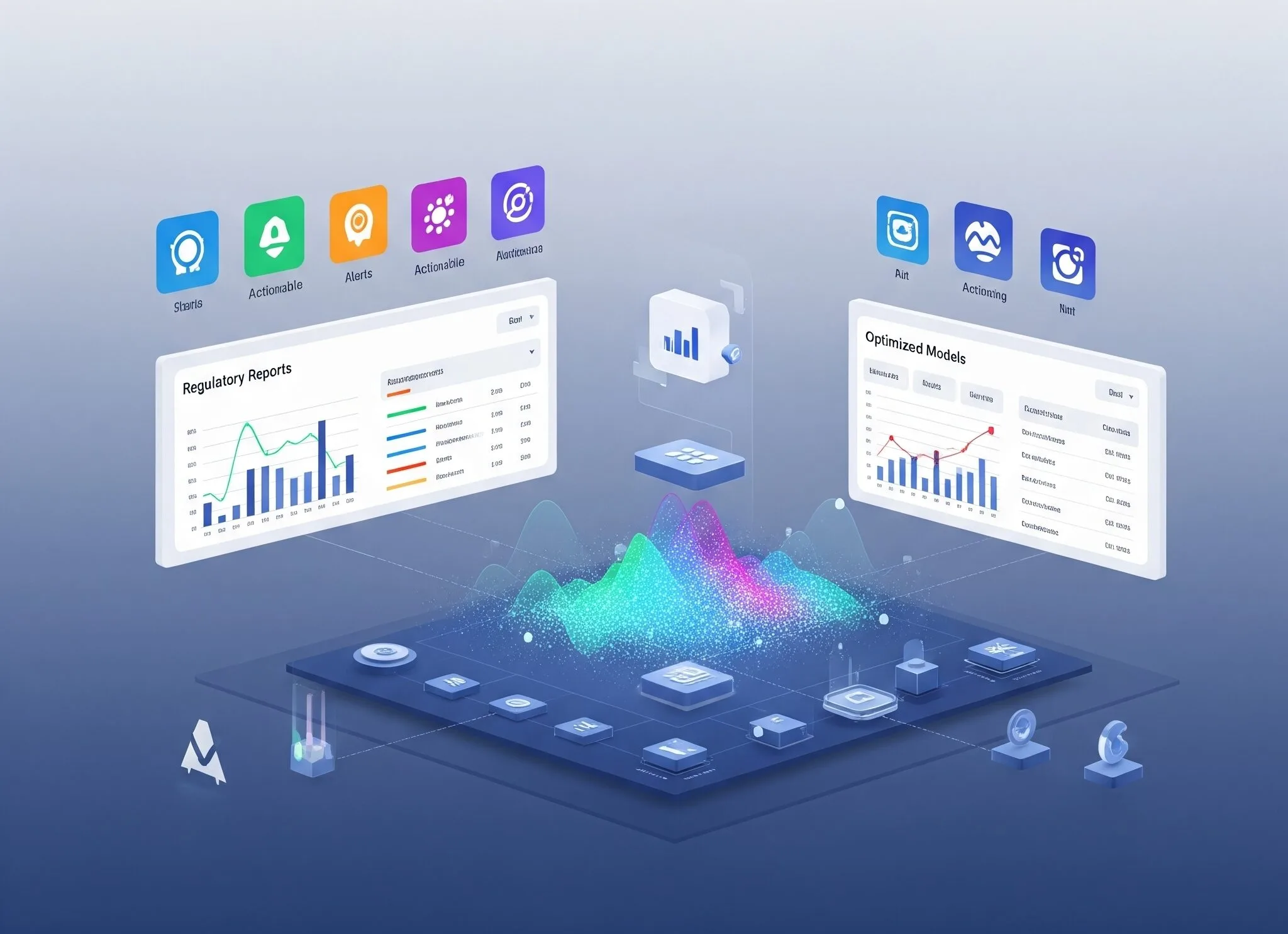Table of content
Technical debt has gained significant attention in the software development community, yet many organisations struggle to fully understand and manage it effectively. This comprehensive guide explores technical debt, its impact on projects, and proven strategies for measuring, managing, and reducing it in 2025.
Key Takeaways:
- Intentionality Matters: Strategic technical debt can accelerate business goals when managed properly
- Visibility is Crucial: Use tools and processes to make technical debt visible to all stakeholders.
- Balance is Essential: Allocate 20-30% of development capacity to debt management.
- Prevention is Better: Establish guardrails and processes to prevent unconscious debt accumulation.
- Evolution is Constant: Stay aware of emerging debt sources from new technologies and practices.
What is Technical Debt?
Technical debt refers to the implied cost of future work that must be done when choosing a quick fix now instead of implementing a better approach that would take longer. This is often seen in early-stage software decisions during product development. As financial debt accrues interest over time, technical debt also compounds, making future changes increasingly complex and expensive.
Ward Cunningham, who coined the term in 1992, explained it with a financial metaphor: taking shortcuts is like taking out a loan – you get something now by incurring costs plus interest in the future. The “principal” is the work required to eliminate the technical shortcut, while the “interest” is the extra effort needed to work around these shortcuts.
Technical debt doesn’t just happen by accident. It can be intentional (strategic) or unintentional (unplanned), but either way, it represents a trade-off between short-term velocity and long-term sustainability.

Types of Technical Debt
Understanding the different types of technical debt can help organisations identify and address them more effectively:
- Code Debt: Poorly written code, duplicate functionality, or overly complex implementations.
- Architectural Debt: Suboptimal system design decisions that limit flexibility and scalability.
- Documentation Debt: Missing, outdated, or incomplete documentation.
- Testing Debt: Inadequate test coverage or poorly designed test suites.
- Infrastructure Debt: Outdated technology stacks or environments.
- Process Debt: Inefficient development or deployment processes.
- Knowledge Debt: Over-reliance on specific team members who hold critical information.
- Security Debt: Postponed security implementations or patches that create vulnerabilities.
Each type of technical debt affects software projects differently and requires specific strategies to address effectively.

What Creates Technical Debt?
Several factors contribute to the accumulation of technical debt:
1. Business Pressures
- Tight deadlines and market pressures lead to faster delivery demands
- Prioritisation of features over code quality
- Budget constraints that limit refactoring efforts
- Competitive pressure to release features quickly
2. Technical Factors
- Changing requirements without corresponding architectural adjustments
- Using outdated technologies or frameworks
- Insufficient technical skills or training
- Rapid scaling without architectural considerations
3. Process Issues
- Inadequate code reviews
- Poor communication between teams
- Lack of coding standards or guidelines
- Insufficient testing practices
- Absence of proper CI/CD pipelines
4. Legacy Issues
- Inherited codebases with existing technical debt
- Systems designed for requirements that have since changed significantly
- Dependencies on obsolete technologies
- Lack of documentation from previous development teams
Recognising the causes of technical debt is key to avoiding it – a factor investors closely watch when assessing a company’s potential for sustainable growth and profitability, as explored in our guide on angel investors vs venture capitalists.
Emerging Sources of Technical Debt in 2025
As technology evolves rapidly, new sources of technical debt have emerged that organisations must address:
1. AI/ML Integration Challenges
The rush to integrate AI and ML into business operations has created unique technical debt scenarios:
- Model Debt: Quick implementation of machine learning models without proper versioning, monitoring, or governance frameworks. Teams often deploy models without considering long-term maintenance, leading to “model rot” where performance degrades over time.
- Data Pipeline Debt: Hastily constructed data pipelines that lack proper validation, monitoring, and error handling. As data sources multiply and change, these fragile pipelines become increasingly difficult to maintain.
- Experimentation Debt: Accumulation of experimental AI features and A/B tests that never get properly cleaned up, creating bloated codebases with unused or partially implemented functionality.
According to Google’s MLOps best practices, proper ML lifecycle management is essential for preventing these debt patterns. Modern AI implementations require robust governance frameworks and continuous monitoring to maintain effectiveness over time.
Learn more about implementing AI and ML for startups responsibly.
2. Multi-Cloud Complexity
Organisations adopting multi-cloud strategies often accumulate significant technical debt:
- Vendor Lock-in Workarounds: Quick fixes to avoid vendor lock-in that create complex abstraction layers without proper design.
- Inconsistent Cloud Services: Using different cloud providers’ services without standardisation, leading to operational complexity and knowledge fragmentation.
- Resource Management Debt: Lack of proper cloud resource governance leading to unused resources, security vulnerabilities, and cost optimisation challenges.
The Cloud Native Computing Foundation provides extensive resources for managing multi-cloud complexity and avoiding common pitfalls.
3. Security and Compliance Pressures
Increasing regulatory requirements have created new forms of technical debt:
- Compliance Debt: Quick implementations to meet regulatory deadlines (GDPR, CCPA, industry-specific regulations) without proper architectural consideration.
- Security Patch Debt: Postponed security updates due to concerns about system stability, creating vulnerability accumulation.
- Authentication/Authorisation Debt: Legacy identity management systems that don’t scale with modern security requirements, often patched with band-aid solutions.
- The OWASP Foundation offers comprehensive guidance on addressing security debt and implementing secure development practices.
4. Container and Microservices Debt
The shift to containerised architectures has introduced specific debt patterns:
- Configuration Drift: Inconsistent container configurations across environments, leading to “works on my machine” issues.
- Service Sprawl: Excessive microservice decomposition without proper governance, creating operational complexity.
- Orchestration Debt: Quick Kubernetes configuration
Technical Debt vs. Technology Debt
While often used interchangeably, technical debt and technology debt represent important distinctions:
Technical debt typically refers to application code-level issues, implementation decisions, architecture patterns, and coding practices that create maintenance challenges.
Technology debt encompasses broader infrastructure and platform concerns:
- Outdated operating systems
- End-of-life database versions
- Legacy hardware
- Unsupported frameworks
“Technical debt affects how you build; technology debt affects what you build with.”

Technical Debt vs Technology Debt: Key Differences
| Aspect | Technical Debt | Technology Debt |
|---|---|---|
| Scope | Application code and architecture | Infrastructure and platform |
| Focus | How software is built | What tools/platforms are used |
| Examples | Code duplication, poor architecture, and missing tests | Outdated OS, legacy databases, unsupported frameworks |
| Impact | Development velocity, code maintainability | Security vulnerabilities, compliance issues, and vendor support |
| Resolution | Refactoring, code improvements, and architectural changes | Platform upgrades, technology migration, and infrastructure modernisation |
| Stakeholders | Development teams, architects | IT operations, infrastructure teams, security teams |
| Timeline | Can be addressed incrementally | Often requires planned migration projects |
| Risk | Decreased productivity, increased bugs | Security breaches, system failures, compliance violations |
Both types of debt can significantly impact organisations, but they often require different remediation strategies and expertise.
What are Some Common Examples of Technical Debt?
To better grasp the concept, consider these common examples:
- Copy-Paste Programming: Duplicating code instead of creating reusable components, leading to maintenance nightmares when changes are needed.
- Quick Fixes: Implementing band-aid solutions to urgent problems without addressing root causes.
- Inconsistent Naming Conventions: Using different naming patterns throughout the codebase makes it harder to understand.
- Outdated Dependencies: Continuing to use libraries or frameworks that are no longer maintained.
- Monolithic Architecture: Failing to break down large applications into modular components.
- Insufficient Documentation: Not documenting APIs, architectural decisions, or code functionality.
- Missing Tests: Skipping unit or integration tests to save time.
- Hard-coded Values: Embedding configuration values directly in code instead of using proper configuration management.

These examples show how small compromises can snowball into major challenges over time – a risk that SMEs and startups must carefully manage. The IEEE Software Engineering Standards provide excellent guidance on establishing practices that prevent such accumulation. When seeking funding, such as through SME funding options or seed funding opportunities, sustainable development practices are often closely scrutinised, making responsible decision-making essential for long-term growth.
How to Measure Technical Debt?
Quick Answer: Measure technical debt using code quality metrics (cyclomatic complexity, duplication), technical debt ratio calculations, static analysis tools, velocity trends, and DORA metrics. The key is combining quantitative tools like SonarQube with business impact measurements to focus improvement efforts effectively.
Let’s explore the detailed approaches below:
Measuring technical debt is critical for organisations seeking to understand and manage code quality. Several approaches include:
1. Code Quality Metrics
- Cyclomatic complexity
- Code duplication percentage
- Comment density
- Method length
- Code churn rate
2. Technical Debt Ratio
This calculates the ratio between the cost to fix the code and the cost to develop it:
Technical Debt Ratio = (Remediation Cost / Development Cost) × 100%

3. Static Code Analysis
Tools like SonarQube, ESLint, or CodeClimate can automatically identify code smells, bugs, and vulnerabilities.
4. Velocity Trends
Declining team velocity despite consistent team size and capacity indicates mounting technical debt.
5. Time-to-Market Metrics
The increasing time required to implement new features of similar complexity suggests that technical debt is slowing development.
6. DORA Metrics
The DevOps Research and Assessment (DORA) team has identified four key metrics:
- Deployment Frequency: How often code is deployed to production
- Lead Time for Changes: Time from code commit to production deployment
- Mean Time to Recovery: Time to recover from failures
- Change Failure Rate: Percentage of deployments causing failures
Measuring technical debt isn’t just about quantifying problems; it’s about understanding where to focus improvement efforts.
What are the Essential Tools for Managing Technical Debt?
Effective technical debt management requires the right tools and processes:
1. Static Code Analysis Tools
- SonarQube: A comprehensive code quality platform that identifies bugs, vulnerabilities, and code smells across multiple programming languages
- CodeClimate: Provides automated code review for maintainability and technical debt tracking with clear metrics
- ESLint/TSLint: JavaScript and TypeScript linting tools that enforce coding standards and identify potential issues
- RuboCop: Ruby static code analyser focused on enforcing style guidelines and best practices
2. Code Quality Monitoring
- CodeCov: Code coverage analysis tool that integrates with CI/CD pipelines to track test coverage trends
- Snyk: Security-focused tool that identifies vulnerabilities in dependencies and provides remediation guidance
- Mend (formerly WhiteSource): Open source security and license compliance management platform
3. Technical Debt Tracking
- Jira/Azure DevOps: Project management tools with custom fields and workflows for tracking technical debt items
- GitHub Issues/GitLab Issues: Built-in issue tracking systems for managing technical debt alongside regular development work
- Linear: Modern project management tool with excellent technical debt categorisation capabilities
4. Documentation Tools
- Confluence/Notion: Knowledge management platforms for maintaining architectural documentation and technical debt registers
- GitBook: A documentation platform that integrates well with development workflows
- Architectural Decision Records (ADRs): A lightweight documentation format for recording important architectural decisions
5. DevOps and Automation Tools
- Jenkins/GitHub Actions/GitLab CI: CI/CD platforms that can automate code quality checks and technical debt monitoring
- Docker/Kubernetes: Containerization tools that help standardise environments and reduce configuration drift
- Terraform/CloudFormation: Infrastructure as code tools that help prevent infrastructure debt
6. Monitoring and Observability
- DataDog/New Relic: Application performance monitoring tools that can identify performance-related technical debt
- Grafana/Prometheus: Open-source monitoring and alerting toolkit for tracking system health and identifying issues
- Sentry: An error tracking and performance monitoring platform that helps identify recurring issues
The key is choosing tools that integrate well with your existing development workflow and provide actionable insights rather than just generating reports.
What are the Effects of Technical Debt?
The effects of technical debt on software projects and organisations are far-reaching and can be devastating if left unchecked:
1. Reduced Development Velocity
- Features take longer to implement
- Bug fixes become increasingly complex
- Simple changes require extensive testing
- Developer onboarding becomes more difficult
2. Decreased Quality
- Higher defect rates
- Inconsistent behavior
- Poor user experience
- Increased customer support burden
3. Increased Costs
- More developer hours are needed for maintenance
- Increased infrastructure costs from inefficient code
- Higher recruitment costs due to turnover
- Opportunity costs from delayed feature delivery

4. Strategic Limitations
- Difficulty adapting to market changes
- Inability to adopt new technologies
- Competitive disadvantage from slower innovation
- Challenges in scaling the business
5. Team Morale & Employee Retention
- Developer frustration and reduced job satisfaction
- Higher turnover rates
- Difficulty attracting quality talent
- Reduced team productivity
“The most expensive technical debt isn’t measured in code – it’s measured in lost opportunities and developer burnout.”
Technical debt doesn’t just affect systems – it directly influences business objectives and overall organisational health. According to Stack Overflow’s 2024 Developer Survey, technical debt is consistently cited as one of the top factors affecting developer satisfaction and productivity. For SMEs and startups, this becomes especially important when approaching angel investors or venture capitalists, both of whom assess long-term sustainability before committing.
How to prioritise technical debt?
Quick Answer: Prioritise technical debt using impact-based assessment (business-critical systems first), cost-benefit analysis, risk evaluation (security vulnerabilities highest priority), and business alignment. Use the Technical Debt Quadrants framework to categorise debt by impact vs. effort, focusing on high-impact, low-effort “quick wins” first.
Here’s how to implement this systematic approach:
Technical debt prioritisation is essential because organisations rarely have resources to address all debt simultaneously. Consider these approaches:
1. Impact-Based Prioritisation
Focus on technical debt that:
- Affects critical business functionality
- Impedes high-priority feature development
- Creates security vulnerabilities
- Impacts system performance for users
2. Cost-Benefit Analysis
Evaluate each potential refactoring effort by:
- Effort required to address the debt
- Long-term benefits of the improvement
- Risk of not addressing the issue
- Business value of the affected components

3. Technical Debt Quadrants
Classify debt into four categories based on impact and effort:
| Category | Impact | Effort | Approach |
|---|---|---|---|
| Quick Wins | High | Low | Address these first to gain immediate value |
| Strategic Projects | High | High | Plan carefully and allocate resources thoughtfully |
| Opportunistic Fixes | Low | Low | Tackle when time and resources allow |
| Reconsider Necessity | Low | High | Lowest priority – often not worth pursuing |
4. Risk-Based Assessment
Consider potential risks based on NIST Cybersecurity Framework guidelines:
- Security vulnerabilities: Immediate priority regardless of effort
- Compliance requirements: Must be addressed within regulatory timeframes
- System stability: Issues affecting core functionality take precedence
- Customer impact: Problems affecting user experience need urgent attention
5. Business Alignment Matrix
Align technical debt priorities with business objectives:
- Revenue-impacting systems: Higher priority for customer-facing features
- Growth-enabling infrastructure: Important for scaling plans
- Cost-reduction opportunities: Focus on high-maintenance areas
- Innovation blockers: Address the debt preventing new technology adoption
Effective technical debt prioritisation ensures that your resources are directed toward the most impactful improvements. RSVR can help by auditing your existing technical setup, identifying areas of technical debt, and guiding you through actionable fixes – so your product is investor-ready and positioned for sustainable growth.
How to Manage Technical Debt?
Quick Answer: Manage technical debt by making it visible through tracking and dashboards, allocating 20-30% of development time to debt reduction, establishing automated guardrails, integrating debt work into regular development cycles, fostering a quality-focused culture, and implementing automation for detection and remediation.
Let’s explore these strategies in detail:
Managing technical debt effectively requires a multifaceted approach:
1. Make Technical Debt Visible
- Track technical debt items in your product backlog
- Schedule regular debt review sessions
- Create a technical debt dashboard with key metrics
- Include debt status in sprint reviews and retrospectives
2. Allocate Dedicated Time
- Set aside “technical debt days” or sprints (typically 20% of development time)
- Implement the “Boy Scout rule” – leave code better than you found it
- Allocate a percentage of each sprint to debt reduction
- Schedule quarterly “cleanup sprints” focused solely on debt remediation
3. Establish Guardrails
- Define and enforce coding standards with automated linting
- Implement automated code quality checks in CI/CD pipelines
- Require adequate test coverage (typically 80%+ for critical paths)
- Mandate architectural decision records (ADRs) for significant changes

4. Integrate with Development Process
- Include refactoring tasks in feature development estimates
- Consider the technical debt impact in sprint planning
- Perform regular code reviews with debt assessment
- Use pair programming to share knowledge and improve code quality
5. Foster a Quality Culture
- Educate the team about technical debt costs and business impact
- Celebrate improvements to code quality and architecture
- Balance delivery speed with long-term sustainability
- Encourage proactive identification of potential debt
6. Implement Automation
- Use static analysis tools to automatically detect code issues
- Automate dependency updates and security patches
- Set up monitoring and alerting for code quality metrics
- Create automated refactoring tools for common patterns
Managing technical debt effectively requires ongoing attention and commitment from both technical teams and business stakeholders. This is particularly crucial for startups looking to scale, as outlined in our product scalability funding guide.
Client Experience with Technical Debt
The Challenge: Inherited Legacy Systems
A client came to us with a large, monolithic application built over several years and passed through multiple teams. The system relied on outdated frameworks, lacked documentation, and had minimal test coverage — all classic signs of accumulated technical debt.
Problems Faced
- Slow Feature Delivery: Even minor updates required weeks due to tightly coupled dependencies.
- High Defect Rate: Frequent regressions increased QA cycles and slowed releases.
- Low Developer Morale: New team members struggled with readability and maintainability, leading to frustration and disengagement.
Our Approach
We began with a comprehensive technical debt audit using tools like SonarQube to pinpoint problem areas. Based on the findings, we implemented a structured improvement plan:
- Identified and prioritised high-complexity, duplicate, and brittle code.
- Introduced automated test coverage integrated into the CI/CD pipeline.
- Scheduled quarterly debt sprints dedicated to refactoring and stabilisation.
- Incrementally modularised the monolith into microservices to improve scalability and agility.
The Outcome
Within six months, measurable improvements were achieved:
- 30% faster time-to-market for new features.
- 40% fewer bug reports, reducing QA overhead.
- Higher developer satisfaction, reflected in improved retention and faster onboarding.
Technical Debt in Agile
Technical debt in Agile environments presents unique challenges and opportunities due to the iterative nature of development. According to the Agile Manifesto, Agile methodologies emphasise:
- Continuous delivery of working software
- Responding to changing requirements
- Close collaboration between business and development teams
- Regular reflection and adaptation
Agile-Specific Strategies for Technical Debt
- Backlog Incorporation: Include refactoring stories in sprint backlogs with clear business value propositions and acceptance criteria.
- Technical Debt Wall: Visualise debt items alongside user stories on your Kanban board to maintain visibility.
- Definition of Done: Include code quality criteria, test coverage thresholds, and documentation requirements in your definition of done.
- Retrospective Focus: Use sprint retrospectives to identify sources of debt and implement preventive measures.
- Sustainable Pace: Maintain a velocity that allows for quality rather than rushing to meet unrealistic deadlines.
- Debt-to-Feature Ratio: Maintain a healthy ratio of technical debt work to new feature development (typically 20-30%).

Agile Anti-Patterns That Create Debt
- Velocity Obsession: Focusing solely on story points delivered without considering quality
- Sprint Commitment Pressure: Cutting corners to meet sprint commitments
- Definition of Done Shortcuts: Relaxing quality standards to ship faster
- Technical Story Rejection: Product owners dismissing technical improvement stories
In Agile environments, technical debt isn’t just a development concern but a product management responsibility. Teams must work together to balance short-term delivery with long-term sustainability.
According to Scrum.org research, Agile teams that neglect technical debt often find their velocity decreases over time as the burden of working with problematic code increases. By contrast, teams that manage debt effectively maintain consistent delivery speed over the long term.
Is Technical Debt Good or Bad?
Quick Answer: Technical debt can be both good and bad. Strategic, deliberate technical debt with clear payback plans can accelerate business goals and validate market opportunities. However, unintentional debt from poor practices or excessive accumulation without management becomes harmful, slowing development and reducing quality.
Here’s when technical debt works for or against you:
This seemingly simple question has a nuanced answer:
When Technical Debt Can Be Beneficial
- Strategic Shortcuts: Taking on debt to meet critical market windows or competitive pressures can be valuable when done intentionally.
- Validated Learning: Rapid experimentation through technical shortcuts can help validate product-market fit before investing in perfect architecture.
- Temporary Solutions: Well-documented temporary solutions with clear payback plans can bridge gaps during major transitions.
- Resource Constraints: When facing severe budget or time constraints, strategic debt can keep projects moving forward.

When Technical Debt Is Problematic
- Unintentional Debt: Debt from poor practices, lack of skill, or insufficient planning typically provides no strategic value.
- Unacknowledged Debt: Hidden debt that accumulates silently without team awareness or tracking.
- Debt Without Remediation Plans: Taking on debt without clear strategies for paying it back.
- Excessive Accumulation: When debt reaches levels that paralyse development and prevent progress.
The Technical Debt Quadrant
Martin Fowler’s Technical Debt Quadrant helps classify debt:
| Deliberate | Inadvertent | |
|---|---|---|
| Prudent | “We must ship now and deal with consequences” | “Now we know how we should have done it” |
| Reckless | “We don’t have time for design” | “What’s layering?” |
- Prudent and Deliberate: Strategic debt taken knowingly (often beneficial)
- Prudent and Inadvertent: Learning-based debt from gaining experience (neutral to positive)
- Reckless and Deliberate: Shortcut-focused debt ignoring best practices (harmful)
- Reckless and Inadvertent: Debt from lack of knowledge or skills (harmful)
Like financial debt, technical debt can be used strategically but becomes destructive when unmanaged. The key difference between good and bad technical debt is intentionality, visibility, and control.
Interactive Technical Debt Assessment Quiz
Test your understanding of technical debt management with this interactive assessment:
Question 1: Technical Debt Identification
Scenario: Your team has been working on a feature for three weeks. You notice that adding a simple configuration option requires changes across 15 different files due to hard-coded values.
What type of technical debt is this?
- A) Documentation debt
- B) Code debt
- C) Testing debt
- D) Infrastructure debt
Answer: B) Code debt – Hard-coded values represent poor coding practices that create a maintenance burden.
Question 2: Prioritisation Strategy
Your team has limited resources and must choose between:
- A) Fixing a security vulnerability affecting 10% of users
- B) Refactoring code that slows down all new feature development by 30%
- C) Updating documentation for a rarely-used API
- D) Optimising a performance issue affecting non-critical background jobs
Which should be prioritised first?
Answer: A) Security vulnerabilities should always be prioritised due to potential business and legal risks, as outlined in OWASP’s risk assessment guidelines.
Question 3: Modern Technical Debt
Which of these represents NEW forms of technical debt emerging in 2025?
- A) Poor variable naming conventions
- B) ML models deployed without monitoring or versioning
- C) Missing unit tests
- D) Duplicated code blocks
Answer: B) AI/ML model debt is an emerging concern as organisations rapidly adopt AI without proper MLOps practices.
Question 4: Measurement Strategy
The best metric for tracking technical debt impact is:
- A) Lines of code written per developer
- B) Number of bugs reported by QA
- C) Time required to implement similar-complexity features over time
- D) Code coverage percentage
Answer: C) Increasing time-to-market for similar features indicates a growing technical debt burden.
Question 5: Agile Integration
In an Agile environment, technical debt should be:
- A) Addressed only during dedicated “cleanup sprints”
- B) Ignored until major releases
- C) Continuously managed with 20-30% of sprint capacity allocated to debt reduction
- D) Fixed only when it causes production issues
Answer: C) Sustainable Agile development requires ongoing attention to technical debt, typically 20-30% of capacity.
Quiz Results:
- 5/5 correct: Expert level – You understand technical debt management comprehensively
- 3-4 correct: Good foundation – Consider reviewing prioritisation strategies
- 1-2 correct: Learning opportunity – Focus on understanding different types of technical debt
- 0 correct: Start with the basics – Review the fundamental concepts in this guide
Conclusion
Technical debt represents a critical aspect of software development that balances short-term needs against long-term sustainability. Organisations that understand what creates technical debt, how to measure it effectively, and how to manage it strategically gain significant competitive advantages through more sustainable development practices.
In 2025, the landscape of technical debt has evolved with new challenges from AI/ML integration, multi-cloud architectures, and rapidly changing security requirements. However, modern DevOps practices, comprehensive tooling, and systematic approaches provide powerful mechanisms for managing these challenges.
The key to success lies not in avoiding technical debt entirely – which is rarely possible or even desirable – but in making conscious decisions about when to take on debt, tracking it diligently with proper tools, and allocating resources to pay it down strategically.
By proactively addressing technical debt with modern tools and practices, development teams can maintain velocity, improve quality, and ensure their software remains adaptable to changing business needs.
For organisations aiming to implement effective technical debt management strategies, understanding the broader context of sustainable product development is crucial. Prioritising improvements thoughtfully and maintaining a clear roadmap ensures long-term stability and scalability.
Frequently Asked Questions (FAQs)
What is meant by tech debt?
Tech debt refers to the implied cost of additional future work resulting from choosing quick or temporary solutions rather than implementing better approaches that would take longer. It’s like taking a shortcut in coding or design that saves time initially but requires more effort to fix or extend later.
What are examples of technical debt?
- Duplicate code that should be refactored into shared functions
- Outdated libraries or frameworks that need upgrading
- Inadequate test coverage that allows bugs to slip through
- Poor documentation makes maintenance difficult
- Overly complex tasks that are hard to understand and modify
- Inconsistent coding styles across a codebase
Is technical debt good or bad?
Technical debt isn’t inherently good or bad – it depends on context. Strategic technical debt, taken on deliberately with a clear repayment plan, can help meet critical business deadlines. However, unplanned technical debt accumulating due to poor practices being ignored for extended periods typically becomes harmful, slowing development and decreasing code quality over time.
What is technical debt in software development?
Technical debt is the cost of extra work needed later because a quick or easy solution was chosen now instead of a better long-term one.
Types of technical debt:
- Deliberate vs. Accidental: Taken on knowingly vs. accumulated unintentionally
- Prudent vs. Reckless: Incurred with planning vs. due to careless shortcuts
- Strategic vs. Tactical: High-level, long-term decisions vs. short-term quick fixes
What is tech debt in Agile?
Tech debt in Agile refers to the accumulated technical compromises made during agile development cycles. In Agile environments, the pressure to deliver working software in short iterations can sometimes lead teams to prioritise feature delivery over technical excellence. Effective Agile teams acknowledge this tendency and build in regular opportunities to address technical debt, ensuring that it doesn’t accumulate to the point where it severely impacts velocity or quality.
What is tech debt vs technical debt?
While “tech debt” is often used as shorthand for “technical debt,” some teams distinguish between the two:
Technical debt refers to the extra work developers must do when a faster, less optimal coding or design solution is chosen intentionally, knowing it will need to be improved later. It’s typically a byproduct of engineering trade-offs.
Technology debt (sometimes also called “tech debt” informally) is broader and refers to outdated or legacy technology that creates hidden costs and risks, such as:
- Outdated operating systems
- End-of-life database versions
- Legacy hardware
- Unsupported frameworks
In short, technical debt comes from shortcuts in development, while technology debt arises from neglecting updates or relying on obsolete tools. Both can slow down development, increase maintenance costs, introduce security vulnerabilities, and require strategic management to mitigate long-term impacts.






